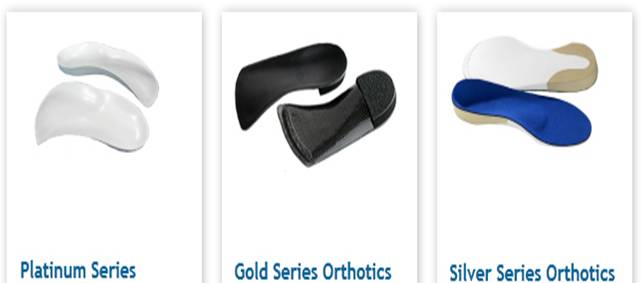|
Grant Austin is a former National Dance
Champion and Professional Instructor. He is also a certified pedorthist who can provide
dancers with custom-fit orthotics to improve their dancing.
Orthotics are orthopedic devices made to:
treat or adjust abnormal foot motion; provide support, stability and
control; increase balance; absorb shock; and relieve pressure on
uncomfortable or sore spots. They can even help relieve back pain caused
from uneven skeletal alignment.
Grant's specialists have helped over 20,000 dancers with
his Platinum Series Custom Fit Orthotics so everyone probably knows someone who is using them
successfully.
Here's a valuable Q & A about the value of
orthotics.
USASN:
What are the most common foot problems that dancers have?
GA: Because dance puts an enormous amount of pressure in the ball
of the foot area, pain in the ball of the foot is the primary issue for
most dancers. Metatarsalgia, Sesmoiditis, Bunions, and Neuromas are all
forefoot problems that can be caused by dancing, and are accompanied by
pain in the ball of the foot area.
USASN:
How do problems with the feet affect the back and skeleton?
GA: Extreme pronation (flat feet) cause the shoulders to slouch
forward which puts pressure on the knees, hips, back and neck. Supporting
the longitudinal arches with Custom Orthotics corrects the posture,
improves balance and reduces stress to the joints.
USASN:
What to you do to assess the problem of a dancer's feet and then what
corrective solutions do you provide?
GA: We do a visual gait analysis, observe the wear of the
patient/customers shoes, and create a weight bearing pedi-graph for
manufacturing the Custom Fit Orthotics.
USASN:
Explain the different kinds of orthotics and why one is better than
another?
GA: We manufacture 3 different orthotics Good (Silver) Better
(Gold), and Best (Platinum).
Good (Silver)
This full length orthotic is flexible and custom fit for 3 arches. It is
great for playing sports and fits in most shoes. They will eventually wear
out and the original insole must be removed to accommodate this orthotic.
Better (Gold)
This rigid 3/4 length orthotic has traditionally been prescribed by most
physicians. It is very durable and effectively corrects extreme pronation.
It has a thick heel cup which can create slippage in some shoes. It's
rigidity can make it difficult to play some sports including dance.
Best (Platinum)
This European designed semi-rigid 3/4 length orthotic is custom fit for
all 5 arches. It is very durable and fits in all shoes. It is excellent
for playing sports and dancing. It can be made to fit perfectly in high
heels and has covers available to make it look natural in open shoes.
USASN:
Do female dancers have more foot issues because of all the spinning and
lunging they do?
GA: Women do seem to have more foot problems than men, and the
spinning and lunging may contribute to that for dancers, however their
foot wear choices probably play a more significant role. The traditional
ladies pointed toe, high heel pump that was so popular in the 1950's and
1960's has made a come back in recent years. This shoe has caused so many
problems for women's feet. The narrow toe forces the toes together causing
pinched nerves between the toe joints (neuromas) and deformity of the big
toe joint (bunions). The natural way for a humans foot to walk is with a
negative heel, whereas the heel is lower that the balls of the feet (earth
shoes). This simulates walking on beach barefooted. So any heel at all is
un-natural and high heels cause excessive pressure to all the joints of
the foot and ankle, but especially the forefoot. Finally there is a notion
in our society that smaller feet are more beautiful on women, so women
will in some cases force their feet into shoes that are way too small or
narrow causing deformity and pain.
USASN:
What are some of the symptoms that dancers should look for to indicate
that they may need to get their feet checked and consider using orthotics
to as a corrective measure?
GA: Inflammation or enlargement of the toe joints are an indication
that calcium deposits or arthritis has set in, even
if no pain is present and should be treated with proper arch support to
offload the joints. A person with fallen
arches (flat feet) may have no foot pain, but the pronation causes strain
to the ankles, knees, hips and low back
and Custom Orthotics should be considered. People with diabetes or other
circulatory or neurological problems
are treated with custom fit orthotics to stimulate circulation and to
prevent injury. Anyone with pain in the feet,
ankles, knees, hips or low back should consider custom fit orthotics as
their first option for treatment, or post
surgery to help with recovery and preventive maintenance.
USASN:
Any other information or advice to share?
GA: We have treated over 15,000 dancers with our Platinum series
custom fit orthotics and have had great results treating chronic
conditions. In 99% of cases the patient has reported some relief. In some
cases, we have seen
bunions disappear, painful conditions like plantar fasciitis and
tendonitis healed completely, and knee and back pain go away. It is a
natural treatment and should be considered by all active dancers to
prevent injury to the
tendons, ligaments, and joints of the foot, ankles and knees.
For more information on orthotics and dance shoes, contact
Grand Austin and his The Dance Connection Store.
The Dance Connection Store
Custom-fit orthotics
770.539.9474
www.customorthoticsinc.com

*** Dance Connection is the Official Shoe Sponsor of
The USA Swing Dance Network |